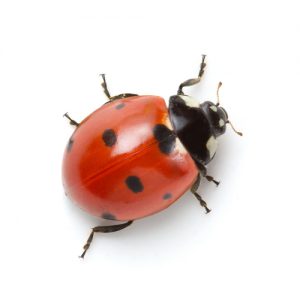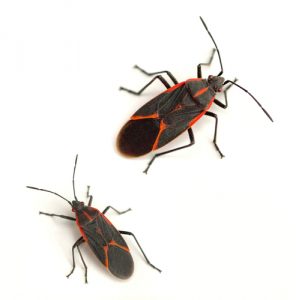Overwintering Insects Are Waking Up Inside Your House!
By Chris Williams on March 6, 2012.
It’s that time of year again when insects that have been spending the winter inside our homes become active again. On those first warm and sunny spring days, overwintering pests that have been hiding in attics and wall and ceiling voids, behind baseboards, or under carpet edges, start to stir and stretch. For most of them, it’s a calling to return to the outdoors to find a mate.
Overwintering insects are those that are not normally found in homes—except for the cold weather months. They are outside insects that move indoors with the first cold weather in the fall. Sometimes we see them and intercept them with a vacuum or a shoe. Often, though, these insects enter around the roofline unseen. Cluster flies or Asian lady beetles may be spending the winter in your attic right now by the hundreds, and you don’t even know it. 
More often though, these insects make themselves known as they emerge from hiding and bumble around like they’re not quite awake. Usually, they will make their way to the light at windows looking for a way out. At this point, because the insects are slow moving, you can either shoo them out the door or go after them with a vacuum or flyswatter.
Our most common overwintering insects are the Asian lady beetle, elm leaf beetle, boxelder bug, brown marmorated stink bug, and cluster fly. Some wasp queens, especially paper wasps, will also overwinter in attics and voids near the roofline. Not every home has all of these invaders; in fact, most homes will have few to none. But, some homes will be sweeping up bugs or beetles by the bagful.
Whether or not your home is invaded largely depends on location, location, location. If your home happens to be near a site where these insects have been feeding, you’re more likely to be infested. For example, if you have a female boxelder tree in your yard, you may be visited by boxelder bugs. Some of these pests spend the summer feeding in agricultural fields or orchards, and will move to the nearest structures when the weather cools. Whether you have winter visitors also depends on how tightly your home is sealed against invading insects. It doesn’t take much of a space to let an insect inside. Openings around doors, windows, vents, under eaves, and around the roof are the most common entry points.
 If you regularly have a problem with overwintering insects in the spring, the time to address that problem is actually in the fall. You should contact a pest control company about treating around the exterior of your home in early fall before the insects start moving inside. A trained pest control technician can point out openings where insects are getting inside, and some companies will provide pest-proofing services to seal those openings. We can do all of that for you at Colonial Pest Control. We’re expert pest-proofers!
If you regularly have a problem with overwintering insects in the spring, the time to address that problem is actually in the fall. You should contact a pest control company about treating around the exterior of your home in early fall before the insects start moving inside. A trained pest control technician can point out openings where insects are getting inside, and some companies will provide pest-proofing services to seal those openings. We can do all of that for you at Colonial Pest Control. We’re expert pest-proofers!